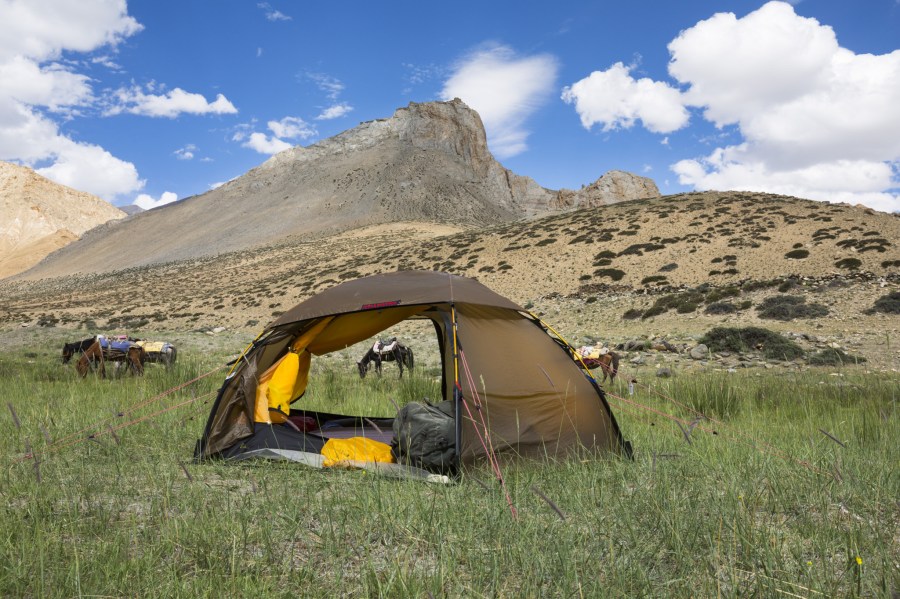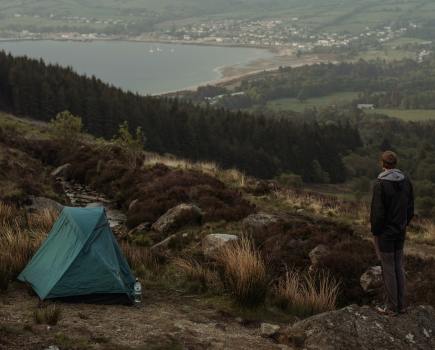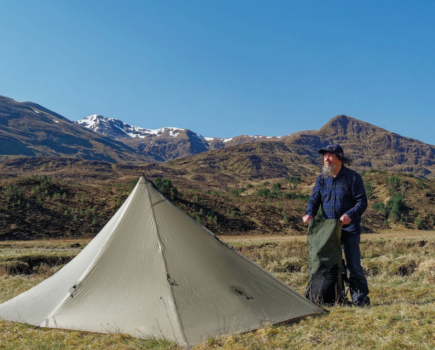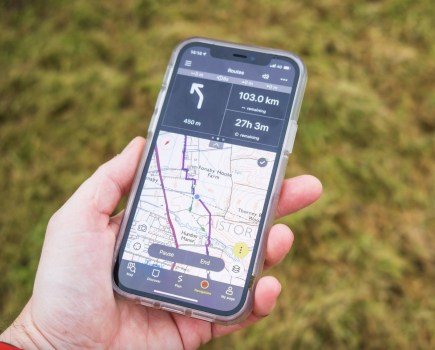The best 2 person tents come in a number of different style, shapes and sizes. Some are made for all-season camping and will be designed to be able to shrug off high winds and snowfall, while at the other end of the scale you have ultralight and minimalist designs that offer just enough protection for the elements to keep you comfortable on summer nights. This article will highlight the best 2 person tents that we think strike the right balances and tick the right boxes for three-season backpacking trips – so that’s overnight trips during spring, summer, and fall seasons, typically in conditions with mild to moderate weather. We’ve also looked at the best one-person tents for backpacking if you don’t need the extra space a two-man tent will offer or the best family tents if you’re after something a lot bigger and slightly more luxurious.
To compile this list we’ve considered space-to-weight ratio, performance, features, convenience, value and and comfort. Primarily, as we’re looking at tents designed for backpacking, we’ve chosen to highlight options that are comfortable for two people to lay out two full-length sleeping mats, that have a big enough porch to store hiking backpacks and hiking boots and that have space to cook safely.
Jump down to the bottom of this article for our detailed guide on what to look for when buying a 2 person tent. We’ve covered everything from the pros and cons of inner-pitched-first tents versus outer-first ones through to things like hydrostatic heads and breathability ratings.
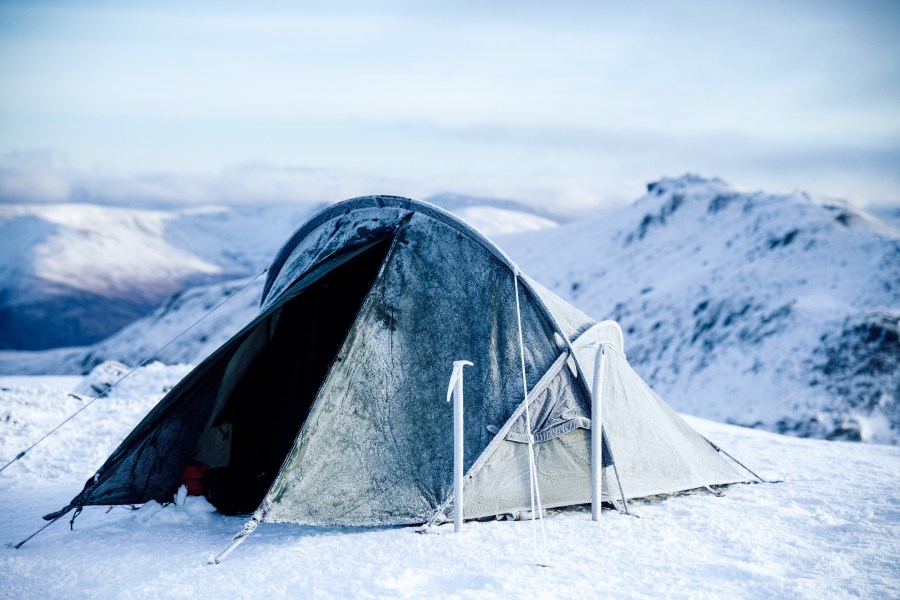
How we tested them
Alex tested these tents on a variety of short backpacking trips throughout the autumn and winter. Objectives varied from low-level camps to challenging winter summit sleeps in the full spectrum of weather, including blizzards.
The best 2 person tents reviewed 2024
Below are some of the best 2 person tents that we’ve tested this year.
Nemo Dagger OSMO 2P – Best buy
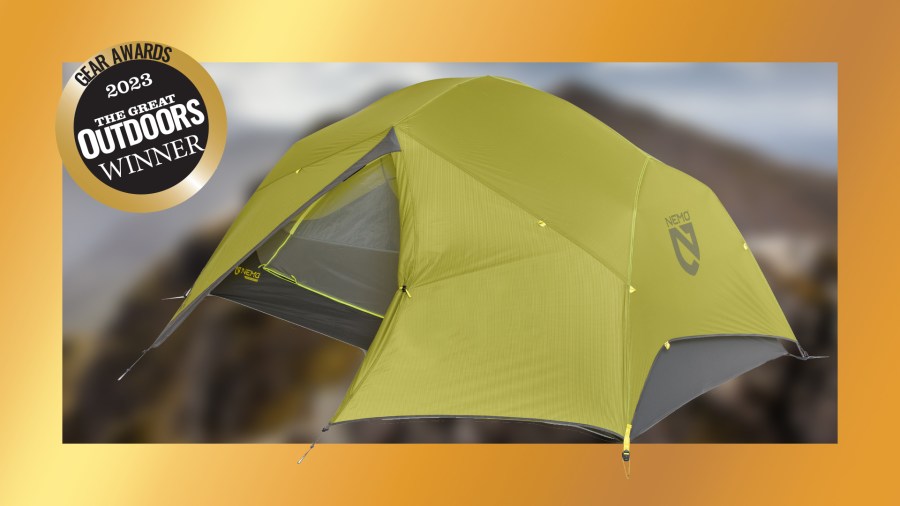
- Rating: 4.5/5
- Likes: Excellent space-to-weight, innovative fabric
- Dislikes: Expensive, inner-first pitching
- Price: $480 | £510 | Available from Wildbounds
Weight: 3 lb , 6 oz | 1.52 kg | Packed weight: 4 lb , 2 oz | 1.86 kg | Packed size: 19.5 x 6.5 x 3.5 in | 50 x 16 x 9 cm | Height: 42 in | 106 cm | Floor dimensions: 90 x 50 in | 229 x 127 cm | Flysheet: OSMO | Inner: 0D OSMO Ripstop (2000 mm) and Nylon Ripstop/ No-See-Um Mesh.
The Dagger OSMO from U.S. outdoor equipment experts, Nemo, offers ample space for two people to stretch out, with two large porches for gear and cooking equipment. The tent is easy to set up and features Nemo’s new OSMO fabric, which is PFC-free, 100% recycled and offers 4x more water repellency than standard tent fabrics.
Useful features include numerous internal pockets, a removable “Landing Zone” to keep gear stored in the porch off wet ground and colour-coded pole ends and docks.
While slightly expensive, the Nemo Dagger OSMO is a good option for backpackers looking for a lightweight, versatile, roomy and comfortable shelter. The fabric has a notable quality to it; it’s light but it doesn’t feel at all flimsy. I’ve found the fabric really does hold its shape too, so there’s no need to correct your pitching after a night of rain to keep the tent walls taut.
I was also really impressed by the overall space-to-weight of the Nemo Dagger OSMO (£510). At 1.86kg it is relatively light and its two large porches, large sleeping area, steep-sided inner walls and high ceiling make it very liveable.
Read Will Renwick’s full Nemo Dagger OSMO review
More info: nemoequipment.eu
Sierra Designs Meteor 3000 2P
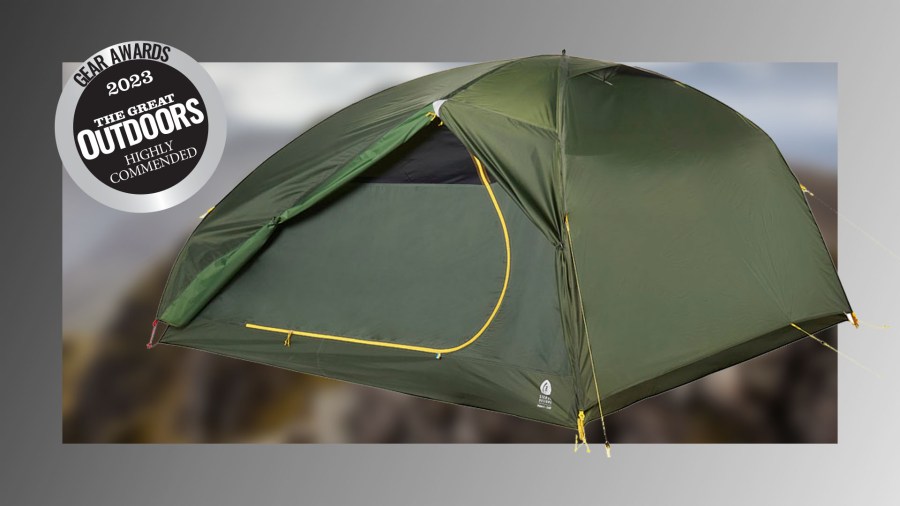
- Rating: 4.5/5
- Likes: roomy, good headroom, large porches, price
- Dislikes: inner-first pitching
- Price: £250 | International shipping | Available from Amazon
Weight: 2.24kg | Pitching: inner-first | Flysheet: 68D poly taffeta, 3000mm hydrostatic head | Inner: 70% 68D poly taffeta uncoated/30% no-see-um mesh | Groundsheet: 68D poly taffeta, 3000mm hydrostatic head | Poles: DAC Pressfit aluminium | Pegs: 10 x 16cm V | Porches: 2 | Inner dimensions: 213x130cm, peak height 104cm
Sierra Designs is an American company that designed the Meteor range of tents specifically for the European market, mainly by upping the durability and weather resistance. The tents have PFC-free 3000mm flysheets made from recycled materials and durable inner walls to increase resistance to wind and rain.
It’s freestanding, with the dome being formed by a single hub pole with four arms and then the ridge pole running over the top of it, creating a solid structure, steep-sided walls and a high ceiling, so there’s plenty of room for two people inside. Big porches on either side create plenty of space for gear storage and for cooking.
There are lots of other likeable design details, including the fact that the fly can be half-rolled up on dry nights to allow for star gazing – or just better ventilation.
I found this was very quick and easy to pitch, thanks to its colour-coded poles, and it was reliable in strong winds. This is a great choice if you are looking for a backpacking tent designed for comfort without paying much of a weight or price penalty. I found the big porches to be particularly handy when using this tent on a day where all my kit got soaked. It meant I could keep it all in the porches and create a warm, dry and cosy bubble within the inner.
Read Will Renwick’s full Sierra Designs Meteor 3000 2P review
More info: ultralightoutdoorgear.co.uk
Vango F10 Xenon UL 2 Plus
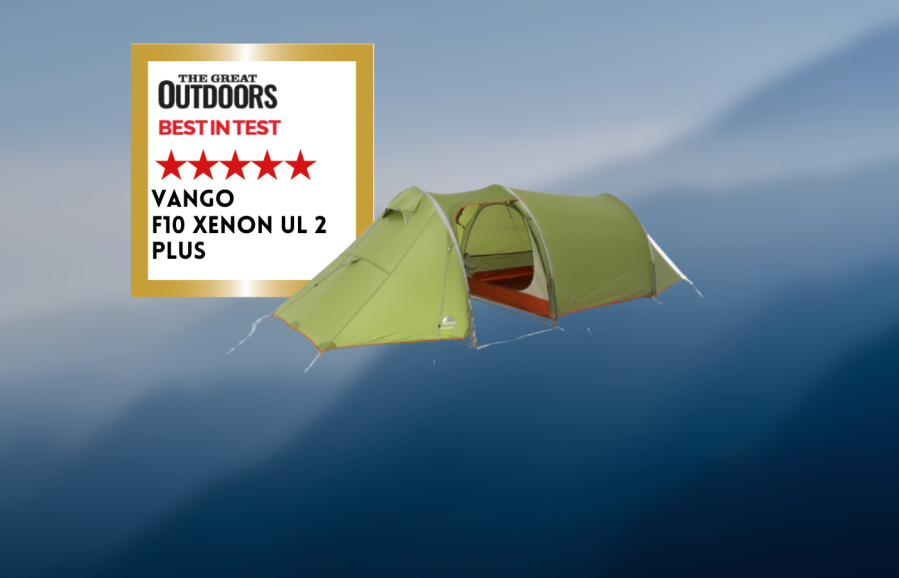
Alex Roddie’s Best in Test
lthough this tent is designed for four-season use, at a low weight it’s an attractive choice year round. And the price of £410 makes it even more attractive. Highly recommended.- Value for performance and weight
- Living space
- Massive porch
- Ease of snow pitching
- Lower-spec fabrics and poles
| Quick specs | |
|---|---|
| Price: £410 Weight: 2.11kg Pitching: fly first Flysheet: 15D Nylon flysheet with a silicone coating on the outer and a PU coating on the inner. Inner: 15D nylon Groundsheet: 70D nylon PU 5,000mm HH Poles: 7.9mm aluminium alloy Pegs: 19x alloy C shaped, 2x pin Porches: 1 Inner Dimensions: 130x230xx100cm vango.co.uk |
The Vango F10 Xenon UL 2 Plus is a lightweight tent that offers exceptional performance, weighing only 2.11kg. Its lightweight materials and poles contribute to its lightweight design, which may affect durability in the long term. The tunnel tent features Gothic arch architecture for added strength and has many adjustable pegging points and guylines to counteract the lightweight poles. It is one of the best tents tested for pitching on snow and comes with basic but serviceable pegs. The tent offers good resistance to high winds when pitched tail to wind, though less than the Hilleberg Allak. The interior living space is generous, with ample room for two. Designed for four-season use, this tent is an attractive choice year-round at a low weight of £410. Highly recommended.
Read Alex’s full Vango F10 Xenon UL 2 Plus Review
Hilleberg Allak 2
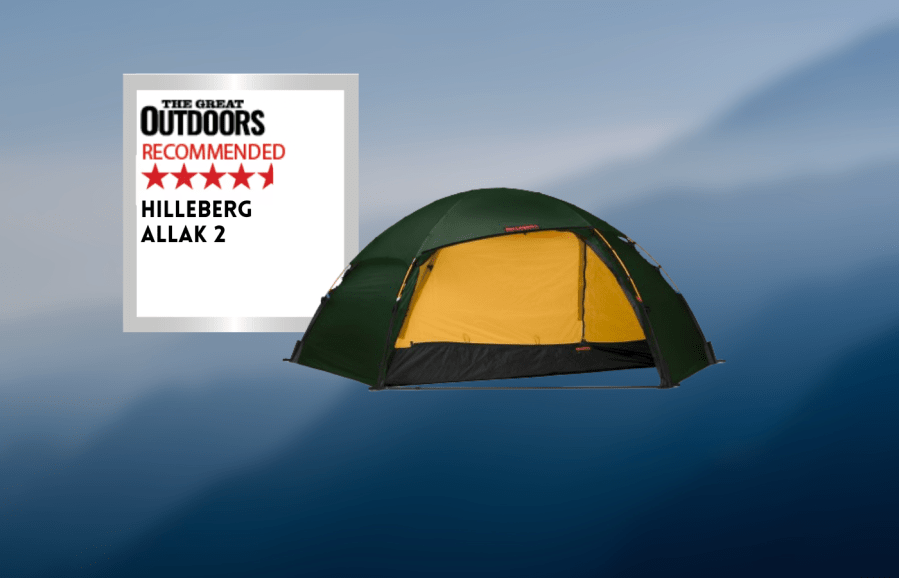
Alex Roddie Recommends
The price and weight are high, but so are the quality and performance. If you need a two-person shelter for regular, reliable, long-term winter service, this is the one I’d choose.- Superb storm resistance
- Durability
- Ease of pitching
- Winter use
- High price
- Basic pegs
- Heavy
| Quick specs | |
|---|---|
| Price: £1,220 Weight: 3.3kg Pitching: inner and fly together Flysheet: 30D Kerlon 1200 nylon ripstop sil 5,000mm HH Inner: 30D ripstop nylon Groundsheet: 70D nylon PU 15,000mm HH Poles: 9mm aluminium Pegs: 12x alloy V angle pegs Porches: 2 Inner Dimensions: 120x225x105cm hilleberg.com |
The Hilleberg Allak 2 person tent is a sturdy three-pole dome design that is free-standing and can be pitched from any angle. It is the most stormproof tent tested and can withstand moderate snow loading. The tent has a high hydrostatic head for the groundsheet and thicker poles than most other tents tested. It is easy to pack into its oversized stuffsack. However, the included pegs are basic and some of the least usable, so it is recommended to replace them with better ones.
The tent’s price and weight are high, but the quality and performance make it a good choice for regular, reliable, and long-term winter service. The included pegs are some of the least usable of any tent tested, so it is recommended to replace them with better ones.
Read Alex’s full Hilleberg Allak 2 Review
Snugpak Scorpion 2 IX WGTE
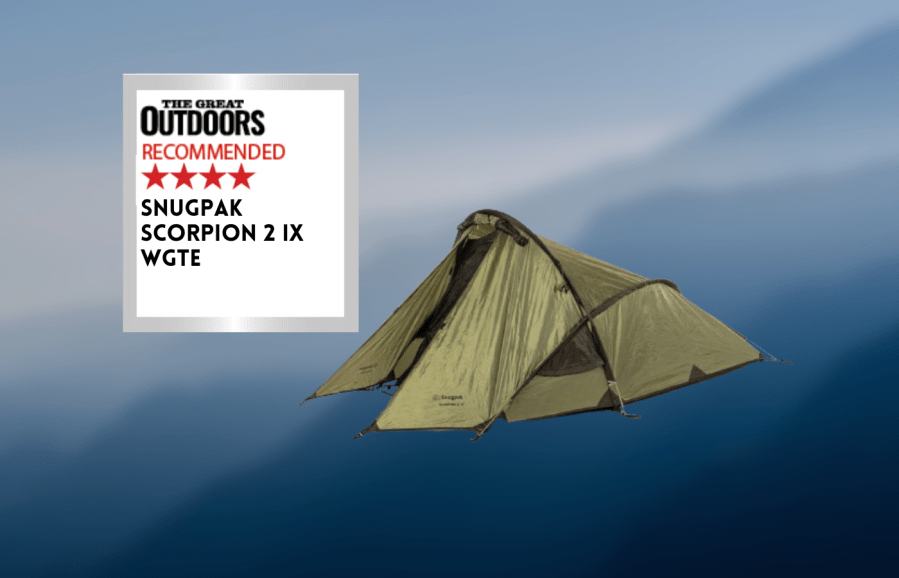
Alex Roddie Recommends
Despite minor downsides, the price is superb – and it’s capable of standing up to moderate winter Scottish conditions.- Fantastic value
- Decent winter performance
- Living space
- No double zips on doors
- Hard to repack
| Quick specs | |
|---|---|
| Price: £375 Weight: 2.8kg Pitching: fly first Flysheet: 26D polyester ripstop PU 5,000mm HH Inner: 50D nylon Groundsheet: 50D nylon PU 5,000mm HH Poles: 9mm 7001 aluminium poles Pegs: 16x alloy Y pegs Porches: 1 Inner Dimensions: 110x205x95cm snugpak.com |
The Snugpak scorpion 2 -person tent is advertised as four-season ready, similar to the Terra Nova Voyager, but heavier. It has a semi-geodesic structure and a single front-facing porch, but is heavier than the Voyager. The tent pitches flysheet first and then suspends the inner from the poles, which works well in bad weather but is slower to pitch than other tents. It has enough pegging points for winter use, but the two porch pegging points cannot be used with snow stakes.
The inner is dark and doesn’t let much light in, which could be beneficial for midsummer. The tent weighs 2.8kg, but the main downside is the cramped interior space, which is too short for comfort even when camping alone. The porch door has no double zip, making it unsuitable for ventilation. Despite these minor issues, the Snugpak scorpion tent is reasonably priced and can withstand moderate winter Scottish conditions.
Read Alex’s full Snugpak Scorpion 2 IX WGTE Review
MSR Hubba Hubba Bikepack 2
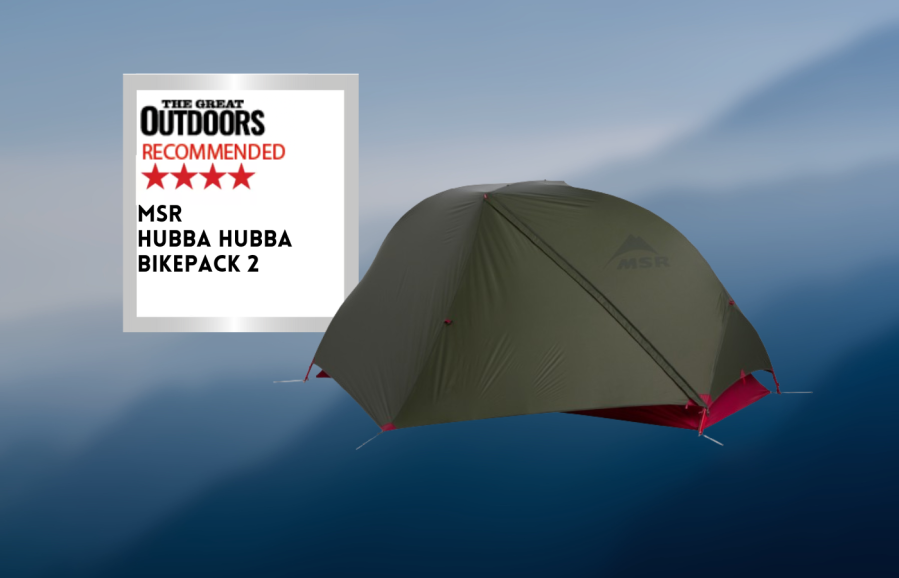
Alex Roddie Recommends
The (very thin) guylines easily slip under pressure. The included pegs also won’t hold in soft ground. It is, however, a good summer tent if the forecast is decent – especially for bikepackers.- Lightweight
- Spacious
- Gear loft
- Great for bikepacking
- Not the most durable or storm resistant
- Pegs don’t hold in soft ground
| Quick specs | |
|---|---|
| Price: £589.99 Weight: 1.75kg Pitching: inner first Flysheet: 20D nylon ripstop sil/PU 1,200MM HH Inner: 20D nylon ripstop, with 10D polyester mesh Groundsheet: 20D nylon ripstop PU 1,200mm HH Poles: 8.5mm DAC NSL aluminium poles Pegs: 8x alloy pins Porches: 2 Inner Dimensions: 127x213x107cm msrgear.com |
The MSR Hubba Hubba Bikepack 2 is a 2-person tent designed for bikepacking, featuring a clever stuffsack with attachments for bike handlebars. The tent has a variant dome design with a single apex pole that splits into a Y shape at both ends and a short tension pole at the top for improved living space. The tent’s inner pitch is less than ideal in bad weather but quicker than some other tested tents.
The materials are thin and ultralight, with only 1,200mm hydrostatic head for the fly and groundsheet. This means moisture can show through the groundsheet under pressure and is less durable.
The tent has two porches and interior space is good, with a gear loft for drying wet gloves. The tent is designed for three-season use, but gusts above 25mph can cause the structure to deform and twist. The thin guylines and included pegs won’t hold in soft ground, making it a good summer tent for bikepackers.
Read Alex’s full MSR Hubba Hubba Bikepack 2 Review
Sea to Summit Telos TR2 Plus
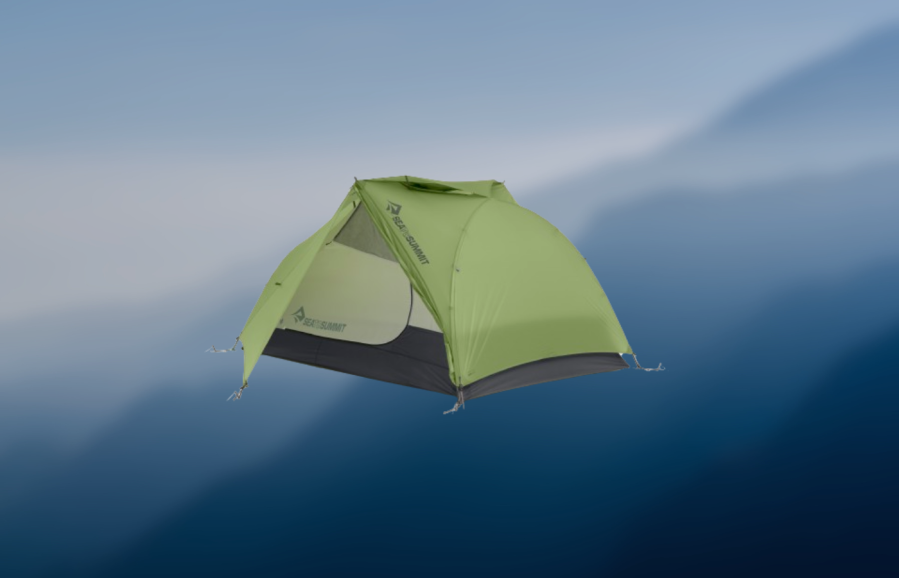
Alex Roddie’s verdict
The Telos TR2 Plus is a good tent with decent interior space for relatively settled weather. The price is a bit high for the performance, though.- Lightweight
- Excellent pegs
- Good ventilation
- Spacious
- Not a year round tent as claimed
- Not good in high winds
- High price for performance
| Quick specs | |
|---|---|
| Price: £615 Weight: 1.72kg Pitching: inner first Flysheet: 15D nylon ripstop sil/PU 1,200mm HH Inner: 20D nylon ripstop Groundsheet: 30D nylon ripstop 4,000mm HH Poles: 9.6 and 9.5mm Aluminum DAC TH72M Poles Pegs: 10x alloy Y pegs Porches: 2 Inner Dimensions: 134x215x105cm seatosummit.co.uk |
The Telos TR2 Plus is a year-round tent with a solid ripstop nylon inner, similar to the MSR Hubba Hubba 2. It features a dome layout with a central ridge pole, Y-shaped sections at either end, and a “Tension Ridge” at the top for more interior space. The tent comes in multiple stuffsacks that clip together, but the package is lengthy due to long pole sections.
The tent offers good interior space, including two decent porches, and good ventilation. The flysheet has a low hydrostatic head but is adequate, and the groundsheet is thin but does not show moisture under pressure. Wind resistance is slightly better than the MSR Hubba Hubba 2, but the price is a bit high for the performance.
The supplied Y-beam pegs are excellent. The Telos TR2 Plus is a good tent with decent interior space for relatively settled weather, but the price is a bit high for the performance.
Read Alex’s full Sea to Summit Telos TR2 Plus Review
Terra Nova Voyager
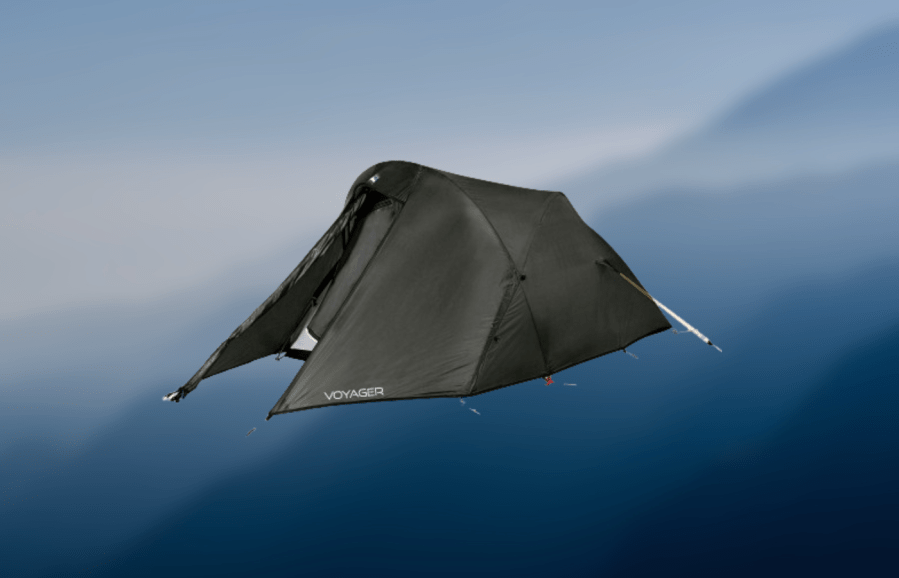
Alex Roddie’s verdict
In my opinion this is a robust and well-made three-plus-season tent made from high-quality materials, but it has limitations in winter, when it’s best reserved for less extreme conditions.- PFC-free fabric
- Hight quality materials
- Good pegs
- High price for performance
- Not genuinly four season
- Inner pitch first
- living space
| Quick specs | |
|---|---|
| Price: £740 Weight: 2.05kg Pitching: inner first Flysheet: 30D Watershed nylon ripstop sil/PU 5,000mm HH Inner: 30D ripstop nylon C0 Groundsheet: 70D Waterbloc nylon PU 10,000mm HH Poles: 8.7mm DAC NFL aluminium Pegs: 14x alloy Y pegs Porches: 1 Inner Dimensions: 90x206x106cm terra-nova.co.uk |
The Terra Nova Voyager is a 25-year-old 2-person tent with a semi-geodesic design, making it strong and lightweight. It was updated in 2023 with PFC-free fabrics. However, it struggles in high winds and can be deformed by big gusts. The tent could benefit from more guylines and thicker poles for better wind resistance. The pegging points lack adjustment, making them difficult to use with snow stakes. Spindrift can easily blow through the large rear vent and mesh panel. The fabric is great, especially the waterproof groundsheet.
However, it is an inner-pitch-first tent, which means the inner may get soaked or covered in snow before the flysheet can be tensioned. The interior living space is not generous, and the single porch is not ideal for cooking. Despite its strengths, the Terra Nova Voyager is not a genuine four-season tent.
Read Alex’s full Terra Nova Voyager Review
How to choose the best 2 person tent

Here are some of the crucial aspects to consider when you’re in the market for a new two-person shelter. These should all be weighed up against your own requirements, including the conditions you’ll be using the tent in and the type of trip too.
Comfortable fit
The length of a tent, the angle of the walls and the headroom all matter. If your sleeping bag pushes against the walls it may get damp from condensation. Walls that angle in sharply restrict living space, and being unable to sit up is uncomfortable. Note that inflatable mats can be thick and reduce headroom. For the most comfort the highest parts of the inner should extend enough that both occupants can sit up.
Pitch perfect
Pitching should be easy and quick. Tents may pitch as units or inner-first – few now pitch flysheet-first. The advantage of pitching as a unit is that it’s fast and the inner can’t get wet in rain. With inner- first-pitching tents you need to be able to erect it really fast in rain to minimise how wet the walls and floor get. An advantage of inner-first-pitching tents is that you can just use the inner on dry nights, which means no condensation, and it keeps bugs out. If the inner has a mesh roof you can see the stars too! Most tents come with pitching instructions but it does help to know the basics of how to pitch a tent before you set out to use your tent for the first time.
Weighty topic
To keep the weight down, some tents come with a thin groundsheet with a low ‘hydrostatic head’ (the height of a column of water it can support before it starts to come through). Often, makers advise the use of a footprint but only supply one as an extra, which means more cost and weight. The weights of the tents reviewed range from 1.18kg to 2.86kg. The weight is not necessarily an indicator of size, though – the two lightest tents are also two of the roomiest – but it’s often a sign of ultralight materials.
Tents suitable for use in the British hills should prioritise weather resistance, so it’s worth looking for down-to-the-ground flysheets and groundsheets with a high hydrostatic head. Tents that pitch as a unit are useful when the weather is bad too.
Materials
Silicone-coated fabrics are very light and durable and therefore they make for good flysheet materials. PU-coated ones are heavier for the same strength and don’t last as long but cost less. Polyester stretches less when wet than nylon but isn’t as strong. Silicone on both sides of a fabric reduces how much moisture it absorbs and how long it takes to dry as well as increasing its life. Some fabrics have silicone outside so rain runs off and PU inside so the seams can be taped.
For inner materials, breathable nylon or polyester tend to be good for resisting drips from condensation and keeping out breezes. These materials can be a bit hot in warm weather so optional mesh doors are useful. Mesh inners are cooler, but breezes can blow through; and if condensation drips they don’t keep it out as well as solid fabric.
Groundsheets need to be made from heavier fabrics than flysheets and have a higher hydrostatic head. Some makers advise using a footprint under a thin groundsheet.
This article we compiled on how to clean a tent will explain more about some of the different fabrics and how to maintain them.
Inner dimensions
The inner should be long enough that your sleeping bag doesn’t push against the end. Ideally there should be room for two full-size sleeping mats side by side. Headroom should allow both occupants to sit up comfortably.
Best 2 person tents: Poles, pegs and guylines
Poles should be easy and quick to attach, and colour-coded so it’s clear where each one goes.
A good set of pegs mixes thin ones for hard ground and wider ones for soft ground. The ones for key pegging points and guylines should be at least 15cm long. Packing extra pegs is advisable.
Guylines are the key to stability in strong winds. Extra guylines are useful in a big storm. Many tents have attachment points for these.
Porches and doors
The porch should be big enough for safe cooking and for storing wet gear and packs. Two porches mean each person has their own storage space and their own entrance.
Flysheet doors that can be opened in a number of ways are the most versatile. In good weather you can open them fully for easy access and views. In storms there should be a side away from the weather that can be opened if cooking. Two doors allow each person their own exit.
Ventilation
Protected vents or upper door zips that can be left open in all but the worst weather can reduce condensation. Only close vents if you really must.
Fancy some more tent reading? Then check out do you need a tent for backpacking

